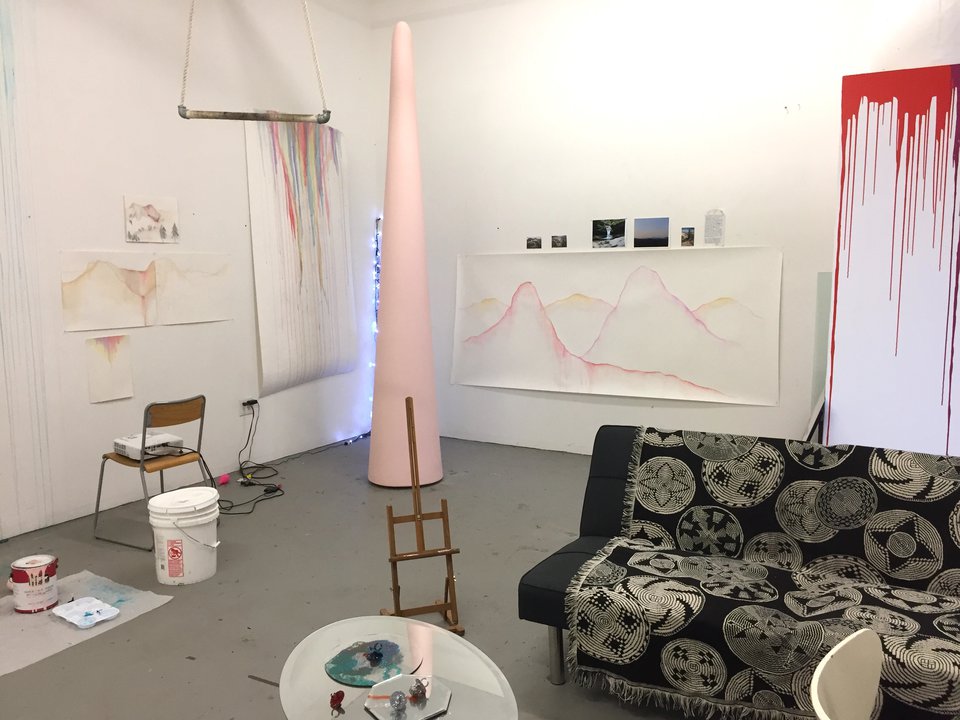
Iris Bernblum Seeks to Reveal your Inner Beast
Using a wide range of media —video, photography, drawing, and sculpture— Iris Bernblum seeks to reveal our inner beast. Creating worlds wondrous and wonderful, bestriding fantasy and reality, her work explores notions of intimacy, intuition, tension, and release, as she investigates the challenges inherent to the task of trying to define “normal” and “abnormal.”
A journey through the highest peaks and the deepest valleys, Bernblum’s ongoing exhibition at Aspect/Ratio gallery places emphasis on relationships between human, nature, and the inner Self. Appropriately titled “Peaks and Valleys,” it manifests creative living, while urging the viewer to look inwards —to discover and embrace their wild side. The show retains the essence of video installation at its core, but branches out to include a record of watercolor paintings that reflect the artist’s aesthetic signature and creative process.
Right before the opening, Bernblum talked to us about what the inside of her studio —and her head— looks like. Like the worlds she creates, it’s no wonder that they too radiate something magical. She explained why for her, a mother, it’s important to create a space where she can be as “irresponsible” or “reckless” as she needs to be, why too much awareness is never a good thing during the art making process, and why making work with her eyes “shut” allows for an intuitive exploration that exhumes truth.

Iris Bernblum, Peaks and Valleys, Aspect/Ratio
A multi-disciplinary artist and curator, currently working out of Mana Contemporary, Bernblum, is a graduate of Columbia University and the School of the Art Institute of Chicago, and has shown at Artist’s Space and The Elizabeth Foundation in New York, The Brooklyn International Film Festival, Terrain gallery, and the Chicago Artists Coalition among others. Often inspired by writing, she finds no better way to open her current exhibition than quoting poet and critic, Maggie Nelson in her memoir “The Argonauts.” We, too, follow her lead.
“I can remember, early on, standing beside you in a friend’s cavernous fourth-floor painting studio in Williamsburg at night (she was out of town), completely naked, more construction workers outside, this time building some kind of luxury high-rise across the street, their light towers flooding the studio with orange shaft and shadow, as you asked me to say aloud what I wanted you to do to me. My whole body struggled to summon any utterable phrase. I knew you were a good animal, but felt myself to be standing before an enormous mountain, a lifetime of unwillingness to claim what I wanted, to ask for it. Now here you were, your face close to mine, waiting.” – Maggie Nelson, The Argonauts

Iris Bernblum, Peaks and Valleys, Aspect/Ratio
Let’s take a step back to look at your studio right now.
Iris Bernblum: Well, at the moment my studio is filled with works in progress for my upcoming show at Aspect/Ratio (“Peaks and Valleys” is currently open through June 16.) I am in the mountains. Over the summer, I took a trip alone to hike to the peak of a mountain that I had hiked with my family when I was thirteen years old. It was miserable then, for many reasons, but a lot of it had to do with the level of machismo my father brought to all these trips, combined with my awkward pubescent thirteen year old self. As an adult, I had this drive that I had to ‘re-conquer’ the peak for myself. So I went. And I tried to conquer this “peak” and I failed. There was a bad storm, and it was too hard and dangerous, and at some point I had to ask myself what the hell I was trying to prove? Why was I obsessed with the peak, and what does it mean to conquer this peak anyway? I went down and the next day, and began again, but this time I allowed myself to wander wherever my urges took me. I found that what I was continually drawn to was the water—the waterfalls, the valleys. And at some point, I said to myself, “Hey look at that… I found my pussy in the mountains.”
That is a long and vague answer to your question, I realize. But to answer you more specifically, I’m working on a series of watercolor installations and drawings as well as video work and possible light installation. I’m very loose—I only have very few “rules” around how or what I make. It’s a very intuitive process. I’m also thinking a lot about my relationship to all things ‘wild’: animals, nature, and human impulse. It all is coming out quite colorful—very much like a rainbow!
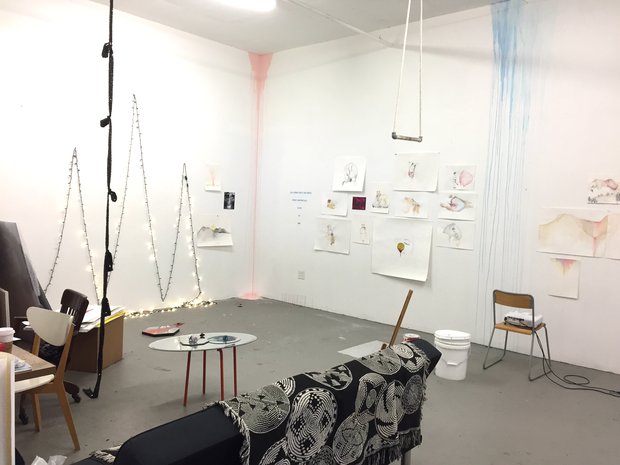
Iris Bernblum, Mana Contemporary Chicago
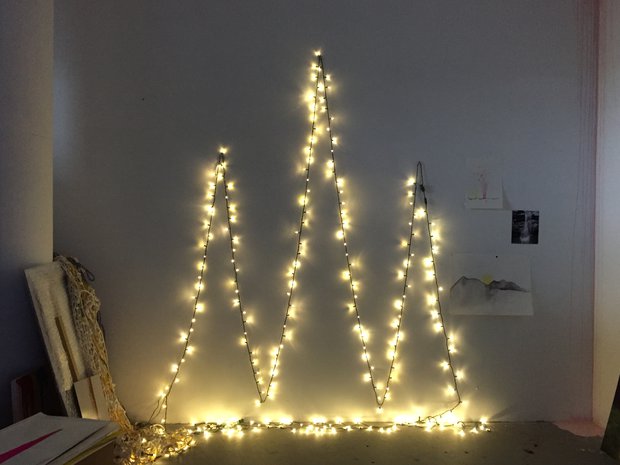
Iris Bernblum, Mana Contemporary Chicago
How do you feel about the studio as space?
Iris Bernblum: My studio is the inside of my head come to life. I need to feel entirely inside my work; I suppose that’s why a lot of the work I do is in dialogue with performance. The space I work in and the work I put out there, for me, is one in the same. Of course the shows have more of a focus than what’s happening in my studio, but the energy is the same. It’s all the same conversation.
The space isn’t decorated per se—it’s an accumulation of all the words, ideas, and images I need to have around me while I work. Sometimes I write directly onto the walls if I need to, just to put it down somewhere—to get it out. I’m a mother and find that it’s very important to me to have a space where I am completely free to do as I please, to act “irresponsibly,” to be as reckless as I need to be without worrying about anyone else. I feel that when I am in the studio, everything is entirely up to me, so if I’m not happy I really only have myself to blame.
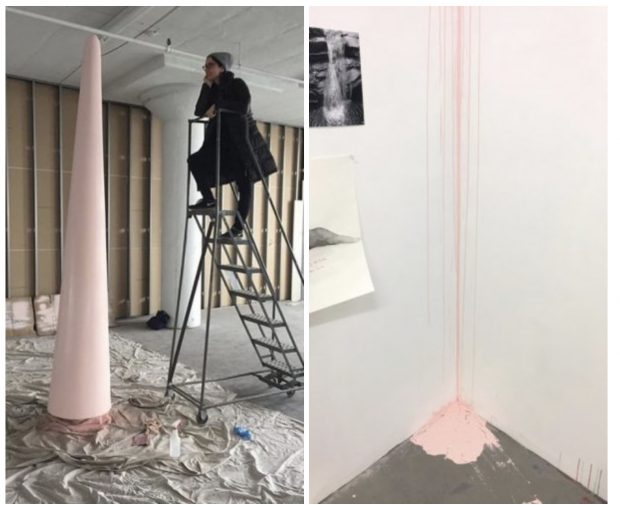
Iris Bernblum, Photo by Assaf Evron + at Mana Contemporary Chicago
Do you have any rituals while working in the studio?
Iris Bernblum: Yes, I always take a food supply for the day to ensure I don’t leave. Some days (actually often) I’ll listen to one song on repeat for hours and hours—this somehow feeds into my desire to be free. If there were anyone but me in there, they would be driven crazy. But I can do as I please, and I do. I have an impulse at times to name work after the title of whatever song I happened to be listening to. It’s almost a meditative in its indulgence; it helps with my flow.
Let’s talk a little bit about your process. What inspires and motivates you, and what are you hoping to communicate through your work?
Iris Bernblum: I suppose being a human being in this world is what inspires me the most —what is it to be human? I often go to my childhood memories, my children, sexuality, psychology, our endless desire to “frame” and make sense of things that somehow resist framing. Often I will begin with writing. I write short stories and small scripts, mainly for myself, but sometimes it ends up in the work. I think of my work as poetry in a way. I like to say I have to make the work with my eyes “shut,” to stay in a partial dream state, to allow an intuitive exploration—because that’s when the truth comes out. If there is too much awareness in the making, at least for me, there is too much of an urge to hide. And I don’t want to hide. It’s scary sometimes, but I’ve come to understand that when I am the most frightened by the work I make, there is a truth within it that I need to put out there.
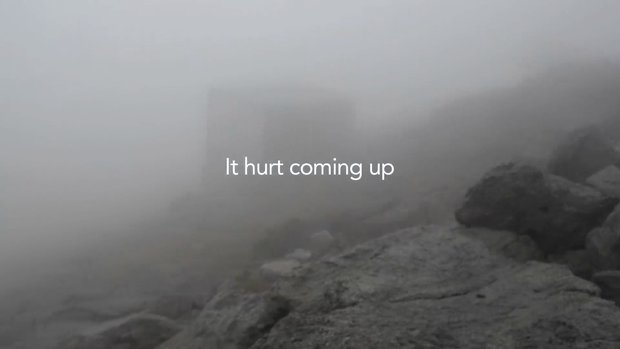
Iris Bernblum, Peaks and Valleys, Aspect/Ratio
